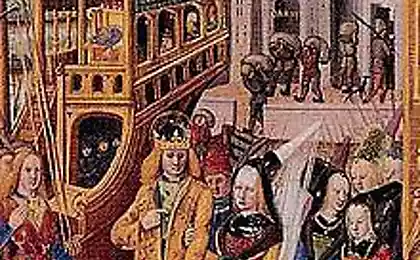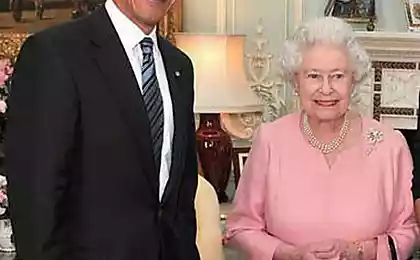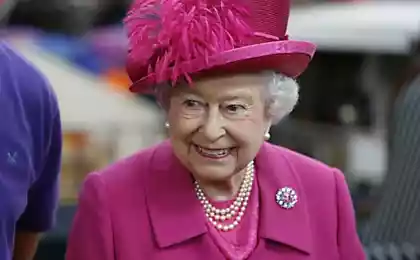894
Queen for 9 days
This Queen of England, of which the majority of history textbooks do not even mention, was one of the most educated women of her time.
Executed at the age of seventeen.
England. XVI century. Tudor times. On the one hand, this period is considered to be the brightest in the country's history, the era of prosperity and splendor. As a result of the Reformation, the state finally appeared vacant land and money from the confiscated from the Catholic Church. This made it possible to equip the fleet, managed to defeat the Spanish "Armada". England became the mistress of the seas and the mistress of trade. But for luxury and wealth viewed scaffold and execution. At the same time, it was a time of strife, religious self-determination and political instability. Such a large number of prisons Albion did not know of any other period. And amidst all this chaos and prosperity, like a mirage, are in English history nine days of Queen Jane.

Jane Grey was the daughter of Henry Grey, Marquess of Dorset (he later received the title of Duke of Suffolk), and Lady Frances Brandon. She should not have to become queen. The girl did not prepare himself for this, and no it is not ready. Henry VIII provided himself with an ample amount of heirs to Jane, even the great-granddaughter of Henry VII through the maternal line, did not think about it. From early childhood, her more than anything in the world cared only their own development and improvement. After the Reformation, held of Henry VIII, the church ceased to be a monopoly in education and women were able to deal not only with the birth of children, farm and home, but also in self-education. Of course, such could only afford aristocrat. Not all aspired to it, but among Englishwomen of the XVI century, researchers account for a half dozen highly educated women (among them the daughter of Thomas More, Chancellor of England). They not only sang and danced, played musical instruments, but also free to read Latin and Greek, to communicate in Italian and French. Jane Grey stood out even in their background. Latin, Greek, French and Italian she learned as a child, later to complete the list of Spanish. That it was not enough, and then she has mastered the Chaldean, Hebrew and Arabic. Reading was one of the few entertainment for Jane. Raised in a strict Puritan morals, she almost did not participate in social life.
After the death of Henry VIII succeeded by his son, Edward VI, the same age as Jane. They were very friendly, and probably also why the idea of the crown did not attend her brilliant mind. However, the guardian of the girl, Lord Seymour Saddle, estimating its brilliant data thought to give Jane a young king. But opal and penalty prevented his far-reaching plans.
Summer night in 1553 Edward VI died at the age of sixteen. By this time Jane Grey has become Jane Dudley, marrying Guilford Dudley, Duke of Northumberland's fourth son. Duke, as regent for the young king, decided to play its political map. There is a version that he force led Jane to marry his son, knowing about the failing health of the young king. Then, perhaps, is the truth and what is a deadly disease of Edward VI Duke of Northumberland had a direct relationship.
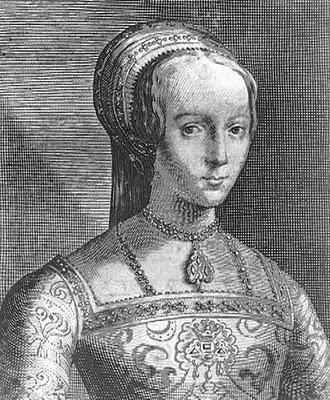
Regent has taken care of in a timely manner to the dying King struck from the act of succession of his stepsisters. Mary and Elizabeth were listed in the will of Henry VIII as the direct heir of Edward, but then the decision of the Parliament were declared illegitimate. Mary Stuart, the king's cousin put their niece, could not claim the throne, being a foreigner (the queen of Scotland). On all this and played a cunning Duke, as well as on the fact that Jane was a supporter of the Church of England. The young monarch, whose reign was marked by the beginning of the Reformation, it was nice to know that it passes the crown in the hand of man alone with him views on faith.
King Edward VI died on a summer night in Greenwich Palace so quiet and peaceful, that the fact of his death, it was possible to hide all that night and all the next day. Only required not to disclose about the death of Edward before Mary, daughter of Henry VIII's first marriage, to be imprisoned in the Tower of London and everything is ready for the proclamation of Queen Lady Jane Grey.
When it became clear that Edward dies, the Council sent for Mary, and she was already 25 miles from Greenwich. As soon as the king died, Lord Dudley Duke sent her his son Sir Robert with a detachment of mounted guards.
Sam Dudley went to Zion, the country house on the Thames, which has already brought the young lady Jane - at the time she was seventeen years old. Arriving there in the boat, Lady Jane did not catch anyone there. The house was still empty, but soon began to arrive the great lords: the duke Dudley Council President William Par Nortgempton Marquess, Earl Francis Hastings Guntinggon, William Herbert Earl of Pembroke, Earl of Arundel, with them came the Duchess of Northumberland and the Marquis Nortgempton. Arundel and Pembroke first knelt in front of Lady Jane and kissed her hand, welcoming like a queen. However, they were the first to have betrayed her by clicking on the side of Mary.
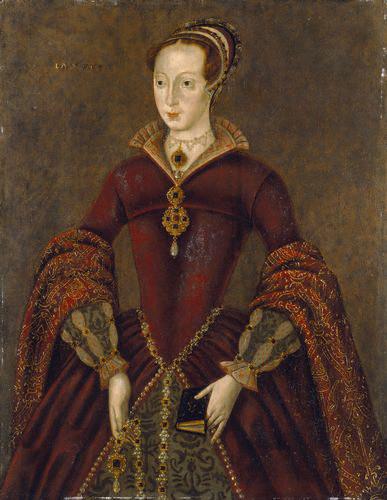
When Lady Jane announced that from now on it - the Queen, she fainted. It took a while to convince her to accept the crown, to which she aspired. When she did manage to persuade, she stood up and told the crowd lords, that "if it is destined to reign, she asks God's blessing on the administration of the country to the glory of God and for the benefit of its people".
July 10, four days after the death of Edward VI, Dudley Jane Grey was proclaimed Queen of England. For further prosperous reign was only arrested and imprisoned in the Tower of Mary and Elizabeth, who failed to timely capture. Elizabeth warned the secretary of the Royal Council of William Cecil, and she took refuge in his residence at Hatfield. (Cecil will be betrayed Elizabeth until the end of his days, and thereafter becomes its first minister.) Mary helped hide Earl of Arundel (peremetnuvshiysya supporter Jane). She found refuge in the castle on the river Keningskom Vavene which proclaimed itself the Queen Mary. Hence it has become to call to his aid supporters, sending letters to all county and city.
Mary responded to the call of a lot of allies. She was an ardent Catholic, one of the most zealous in world history. Maria saw in Protestantism source of their misery, because it is a result of the Reformation, it has become illegitimate. The reason for the reform of the Church in England was the refusal of the Pope to legalize divorce of King Henry VIII and his first wife Catherine of Aragon, his mother Mary. The response to this was the decision to release the Church of England from subjection to Rome, adopted by the Parliament in 1534. The gap was not so much religious as political. It was announced on the preservation of all the Catholic dogmas and rites. However, when Edward VI had already been introduced some elements of Protestantism: in 1549 was approved by the Book of Common Prayer, translated and adapted the basic liturgical books. Church land still under Henry VIII were given secular owners, and indeed the Church of England was subject of secular power. That is why on the side of Jane made efforts in the Reformation aristocracy. For Mary is standing squires and the common people. The conflict was not only and not so much between queens as between nobles and commoners.

The first day of the Board Jane
At five o'clock in the evening announced the death of the king and announced his last will. Jane proclaimed queen. After supper, when the queen retired to his chambers, the Marquis of Winchester, Lord Treasurer, brought her royal crown of diamonds and he asked her to try on. Jane said that she was just right. Winchester then asked when she would order order another crown? For whom? For the Lord Guilford, her husband - the Marquis replied.
"Crown, - said 17-year-old Lady Jane - not a toy for boys and girls".
She could not make him king: to raise the dignity of Parliament had the right only. Lord Guilford burst into tears and walked out of her room.
The second day
The bad news came from the eastern counties. Lord Robert failed to capture Mary. Arundel traitor Mary hurried to notify the king's death, and she disappeared. Princess Mary was locked in a castle on the river Keningskom Vavene, proclaimed herself queen there and sent letters to all counties and cities, calling to his aid his faithful people.
The third day
On Wednesday morning, while sitting in the Lords of the Council, together with the Queen Jane, had received the news that Mary is in Keningskom castle and she rushes to the aid of many allies.
All predicted that there will come a fierce struggle between nobles and commoners of England: squires and the people stood behind the Queen Mary and the counts and dukes of Queen Jane. Lord Dudley, at the request of the Council headed by the army, which was sent against the Queen Mary.
The fourth day
Lord Dudley gathered an army.
Fifth day
Dudley solemnly marched from London led the first group of 600 people with a number of tools and a great staff. Mary did not expect his arrival, she chose to run, and one day overcome the 40 miles. In a way it almost was captured enemy detachment under the command of Sir Robert, but a few of her words was enough to entice the entire squad to go to her. Many noblemen that day came to the defense of Queen Mary.
Sixth day
The further deepened Lord Dudley in East Anglia, the harder it became opposition from local residents. Mary was now Famlingamskom castle. Several ships sent to arrest Mary went to her side and took her weapons and food. Dudley sent to London for fresh troops, hurriedly moved forward and took the night in Cambridge.
Seventh day
Pembroke and Winchester tried to secretly leave the Lady Jane, the first grabbed, but the latter managed to escape. Lords left Jane, like rats leaving a sinking ship.
Eighth day
The Royal Council was not consent. England is also divided. Jane sympathized, but still the majority of people stood behind Mary.
Ninth day
[B]
Royal council retreated from Jane. Only Cramner and Gray - her father - remained faithful to her. Army also sharpener treason. On the road to Burne soldiers Dudley broke him and forced him to retreat to Cambridge, which was already occupied by supporters of Mary.
There he went to his daughter, to say the historic phrase: "Come down, my child. Here, you do not belong. " Jane, who sat on the throne alone, as a dutiful daughter immediately obeyed.
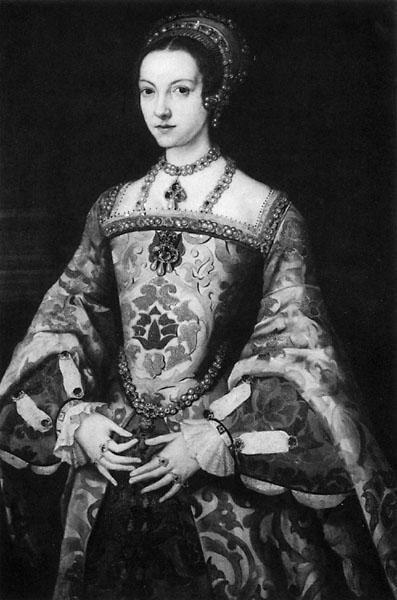
Mary Tudor, who ascended the throne under the name of Mary I, nine-board ignored his cousin. Although it proclaimed queen of July 19, 1553, the beginning of his reign, she always believed the day of death of Edward.
Jane, along with two of her maids of honor, immediately taken into custody. Were also arrested her husband, father, and, of course, the Duke of Northumberland. Duke was executed August 22, 1553. His son, sitting with his wife in a neighboring cell for days carved on the wall of her name. Before the wedding, they knew only a few days, and married a couple of months. He could not become king without the approval of Parliament, but could go along with it on the chopping block.
Seven months later, the Queen has finally come to pass an opponent in the hands of the executioner. Before she wanted to pay her to Catholicism, as almost all of her relatives during this time. Maria even was ready to postpone the execution. That's why Jane declare the death penalty was requested Fekkengemu father. However, his attempts to save her immortal soul were unsuccessful. Lady Dudley versed in theological matters probably better than the priest, and only wanted to pray it does not interfere.
Pay Jane to Catholicism in one day - it was impossible. For the salvation of her soul it was necessary to postpone the execution, scheduled for Friday - Fekkengem insisted that the Queen has postponed the execution.
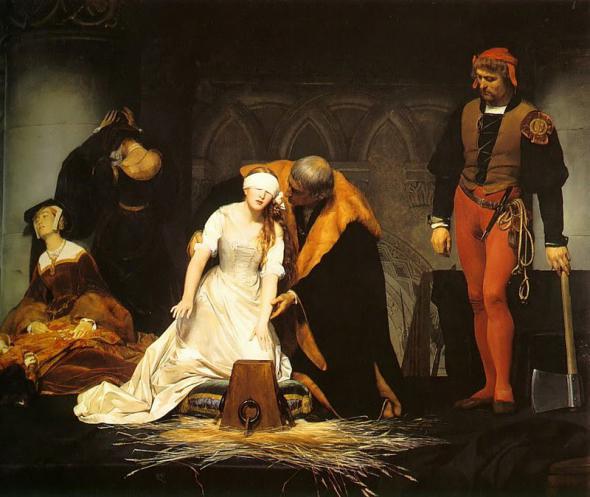
Jane gave her upset postponement of the death penalty - she did not want to die, at seventeen nobody wants to die, but do not want the Queen gave her an extra day of life in the hopes of forcing her to withdraw from their faith. Jane coldly greeted Fekkengema.
Learning about the deplorable result of a second date with her confessor concluded, Maria was furious. She ordered a death sentence and sent for Gray, who was imprisoned in the country. Maria could not make Jane depart from the faith, and subjected her to cruel mental torment she ordered the execution of Guilford and to transport his body past the windows of the prison Jane, she erected a scaffold for the unfortunate Jane in mind its windows and forced Lord Grey present at the execution of her daughter, she forbade pastor Jane prepare for death.
Priests, which Queen Mary sent to the Tower of London, were the most cruel torturers Lady Jane; they forcibly broke into her and would not leave her until his death.
Early in the morning, before dawn, under her windows came the sound of hammers: they were carpenters to erect the scaffold on which Lady Jane had to die. Looking into the garden, Jane saw a company of archers and spearmen, saw Guilford, which led to his execution. She sat by the window and began to wait quietly. An hour passed, an hour long, and that's up to her ears came the sound of the wheels on the pavement. She knew that it was a wagon body Guilford, and stood up to say goodbye to her husband.
A few minutes later Fekkengem come for her. Both her maid of honor to weep loudly and almost dragging his feet; Jane all in black, with a prayer book in his hands, quietly went to the scaffold, was held on the lawn by formation of soldiers lined up, climbed the scaffold, and turned to the crowd and said quietly: "Good people, I have come here to die. Conspiracy against Her Majesty the Queen was lawless deed; but for me it was committed, I do not want it. I solemnly testify that I am not guilty before God. And now, good people, in the last moments of my life does not leave me with your prayers ".
She knelt down and asked Fekkengema, the only cleric who has allowed Mary to witness the execution Jane: "Can I say a psalm?"
"Yes," - he murmured.
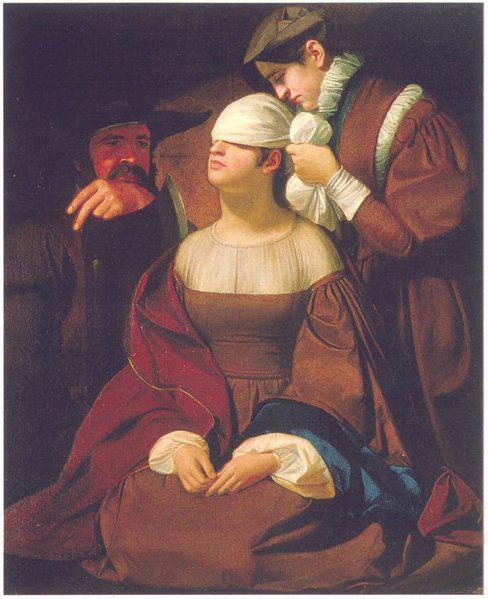
Then it clear voice said: "Have mercy on me, O Lord, according to thy mercy of things, according to the multitude of thy cleanse me of my transgressions." Finished reading, she took off her gloves and handkerchief, gave them to the maid of honor, unbuttoned her dress and took off her veil. The executioner wanted to help her, but she pushed him calmly and she tied my eyes a white handkerchief. Then he fell at her feet, begging him to forgive him for what he had to do. She whispered a few kind words of compassion and then said loudly: "I beg you, stop soon!"
She knelt before the scaffold and began looking for her hands. The soldier, who was standing beside her, took her hand and put it where it should have. Then she leaned her head on the block and said, "Lord, in your hands I commend My spirit," and died under the executioner's ax.
Thus ended the life of "nine-Queen".
Mary I rule only five years, but during that time managed to earn the nickname "Bloody". All the years of her reign, the London prisons were so overcrowded that dungeon had to turn all the churches of the city. However, efforts to combat Bloody Mary with a new faith go to waste. The Queen was childless, and her sister inherited, the same Elizabeth I Tudor, who was a Protestant.
Here you can see the Museum of Lady Jane.
via horror1017

Source:
Executed at the age of seventeen.
England. XVI century. Tudor times. On the one hand, this period is considered to be the brightest in the country's history, the era of prosperity and splendor. As a result of the Reformation, the state finally appeared vacant land and money from the confiscated from the Catholic Church. This made it possible to equip the fleet, managed to defeat the Spanish "Armada". England became the mistress of the seas and the mistress of trade. But for luxury and wealth viewed scaffold and execution. At the same time, it was a time of strife, religious self-determination and political instability. Such a large number of prisons Albion did not know of any other period. And amidst all this chaos and prosperity, like a mirage, are in English history nine days of Queen Jane.

Jane Grey was the daughter of Henry Grey, Marquess of Dorset (he later received the title of Duke of Suffolk), and Lady Frances Brandon. She should not have to become queen. The girl did not prepare himself for this, and no it is not ready. Henry VIII provided himself with an ample amount of heirs to Jane, even the great-granddaughter of Henry VII through the maternal line, did not think about it. From early childhood, her more than anything in the world cared only their own development and improvement. After the Reformation, held of Henry VIII, the church ceased to be a monopoly in education and women were able to deal not only with the birth of children, farm and home, but also in self-education. Of course, such could only afford aristocrat. Not all aspired to it, but among Englishwomen of the XVI century, researchers account for a half dozen highly educated women (among them the daughter of Thomas More, Chancellor of England). They not only sang and danced, played musical instruments, but also free to read Latin and Greek, to communicate in Italian and French. Jane Grey stood out even in their background. Latin, Greek, French and Italian she learned as a child, later to complete the list of Spanish. That it was not enough, and then she has mastered the Chaldean, Hebrew and Arabic. Reading was one of the few entertainment for Jane. Raised in a strict Puritan morals, she almost did not participate in social life.
After the death of Henry VIII succeeded by his son, Edward VI, the same age as Jane. They were very friendly, and probably also why the idea of the crown did not attend her brilliant mind. However, the guardian of the girl, Lord Seymour Saddle, estimating its brilliant data thought to give Jane a young king. But opal and penalty prevented his far-reaching plans.
Summer night in 1553 Edward VI died at the age of sixteen. By this time Jane Grey has become Jane Dudley, marrying Guilford Dudley, Duke of Northumberland's fourth son. Duke, as regent for the young king, decided to play its political map. There is a version that he force led Jane to marry his son, knowing about the failing health of the young king. Then, perhaps, is the truth and what is a deadly disease of Edward VI Duke of Northumberland had a direct relationship.

Regent has taken care of in a timely manner to the dying King struck from the act of succession of his stepsisters. Mary and Elizabeth were listed in the will of Henry VIII as the direct heir of Edward, but then the decision of the Parliament were declared illegitimate. Mary Stuart, the king's cousin put their niece, could not claim the throne, being a foreigner (the queen of Scotland). On all this and played a cunning Duke, as well as on the fact that Jane was a supporter of the Church of England. The young monarch, whose reign was marked by the beginning of the Reformation, it was nice to know that it passes the crown in the hand of man alone with him views on faith.
King Edward VI died on a summer night in Greenwich Palace so quiet and peaceful, that the fact of his death, it was possible to hide all that night and all the next day. Only required not to disclose about the death of Edward before Mary, daughter of Henry VIII's first marriage, to be imprisoned in the Tower of London and everything is ready for the proclamation of Queen Lady Jane Grey.
When it became clear that Edward dies, the Council sent for Mary, and she was already 25 miles from Greenwich. As soon as the king died, Lord Dudley Duke sent her his son Sir Robert with a detachment of mounted guards.
Sam Dudley went to Zion, the country house on the Thames, which has already brought the young lady Jane - at the time she was seventeen years old. Arriving there in the boat, Lady Jane did not catch anyone there. The house was still empty, but soon began to arrive the great lords: the duke Dudley Council President William Par Nortgempton Marquess, Earl Francis Hastings Guntinggon, William Herbert Earl of Pembroke, Earl of Arundel, with them came the Duchess of Northumberland and the Marquis Nortgempton. Arundel and Pembroke first knelt in front of Lady Jane and kissed her hand, welcoming like a queen. However, they were the first to have betrayed her by clicking on the side of Mary.

When Lady Jane announced that from now on it - the Queen, she fainted. It took a while to convince her to accept the crown, to which she aspired. When she did manage to persuade, she stood up and told the crowd lords, that "if it is destined to reign, she asks God's blessing on the administration of the country to the glory of God and for the benefit of its people".
July 10, four days after the death of Edward VI, Dudley Jane Grey was proclaimed Queen of England. For further prosperous reign was only arrested and imprisoned in the Tower of Mary and Elizabeth, who failed to timely capture. Elizabeth warned the secretary of the Royal Council of William Cecil, and she took refuge in his residence at Hatfield. (Cecil will be betrayed Elizabeth until the end of his days, and thereafter becomes its first minister.) Mary helped hide Earl of Arundel (peremetnuvshiysya supporter Jane). She found refuge in the castle on the river Keningskom Vavene which proclaimed itself the Queen Mary. Hence it has become to call to his aid supporters, sending letters to all county and city.
Mary responded to the call of a lot of allies. She was an ardent Catholic, one of the most zealous in world history. Maria saw in Protestantism source of their misery, because it is a result of the Reformation, it has become illegitimate. The reason for the reform of the Church in England was the refusal of the Pope to legalize divorce of King Henry VIII and his first wife Catherine of Aragon, his mother Mary. The response to this was the decision to release the Church of England from subjection to Rome, adopted by the Parliament in 1534. The gap was not so much religious as political. It was announced on the preservation of all the Catholic dogmas and rites. However, when Edward VI had already been introduced some elements of Protestantism: in 1549 was approved by the Book of Common Prayer, translated and adapted the basic liturgical books. Church land still under Henry VIII were given secular owners, and indeed the Church of England was subject of secular power. That is why on the side of Jane made efforts in the Reformation aristocracy. For Mary is standing squires and the common people. The conflict was not only and not so much between queens as between nobles and commoners.

The first day of the Board Jane
At five o'clock in the evening announced the death of the king and announced his last will. Jane proclaimed queen. After supper, when the queen retired to his chambers, the Marquis of Winchester, Lord Treasurer, brought her royal crown of diamonds and he asked her to try on. Jane said that she was just right. Winchester then asked when she would order order another crown? For whom? For the Lord Guilford, her husband - the Marquis replied.
"Crown, - said 17-year-old Lady Jane - not a toy for boys and girls".
She could not make him king: to raise the dignity of Parliament had the right only. Lord Guilford burst into tears and walked out of her room.
The second day
The bad news came from the eastern counties. Lord Robert failed to capture Mary. Arundel traitor Mary hurried to notify the king's death, and she disappeared. Princess Mary was locked in a castle on the river Keningskom Vavene, proclaimed herself queen there and sent letters to all counties and cities, calling to his aid his faithful people.
The third day
On Wednesday morning, while sitting in the Lords of the Council, together with the Queen Jane, had received the news that Mary is in Keningskom castle and she rushes to the aid of many allies.
All predicted that there will come a fierce struggle between nobles and commoners of England: squires and the people stood behind the Queen Mary and the counts and dukes of Queen Jane. Lord Dudley, at the request of the Council headed by the army, which was sent against the Queen Mary.
The fourth day
Lord Dudley gathered an army.
Fifth day
Dudley solemnly marched from London led the first group of 600 people with a number of tools and a great staff. Mary did not expect his arrival, she chose to run, and one day overcome the 40 miles. In a way it almost was captured enemy detachment under the command of Sir Robert, but a few of her words was enough to entice the entire squad to go to her. Many noblemen that day came to the defense of Queen Mary.
Sixth day
The further deepened Lord Dudley in East Anglia, the harder it became opposition from local residents. Mary was now Famlingamskom castle. Several ships sent to arrest Mary went to her side and took her weapons and food. Dudley sent to London for fresh troops, hurriedly moved forward and took the night in Cambridge.
Seventh day
Pembroke and Winchester tried to secretly leave the Lady Jane, the first grabbed, but the latter managed to escape. Lords left Jane, like rats leaving a sinking ship.
Eighth day
The Royal Council was not consent. England is also divided. Jane sympathized, but still the majority of people stood behind Mary.
Ninth day
[B]
Royal council retreated from Jane. Only Cramner and Gray - her father - remained faithful to her. Army also sharpener treason. On the road to Burne soldiers Dudley broke him and forced him to retreat to Cambridge, which was already occupied by supporters of Mary.
There he went to his daughter, to say the historic phrase: "Come down, my child. Here, you do not belong. " Jane, who sat on the throne alone, as a dutiful daughter immediately obeyed.

Mary Tudor, who ascended the throne under the name of Mary I, nine-board ignored his cousin. Although it proclaimed queen of July 19, 1553, the beginning of his reign, she always believed the day of death of Edward.
Jane, along with two of her maids of honor, immediately taken into custody. Were also arrested her husband, father, and, of course, the Duke of Northumberland. Duke was executed August 22, 1553. His son, sitting with his wife in a neighboring cell for days carved on the wall of her name. Before the wedding, they knew only a few days, and married a couple of months. He could not become king without the approval of Parliament, but could go along with it on the chopping block.
Seven months later, the Queen has finally come to pass an opponent in the hands of the executioner. Before she wanted to pay her to Catholicism, as almost all of her relatives during this time. Maria even was ready to postpone the execution. That's why Jane declare the death penalty was requested Fekkengemu father. However, his attempts to save her immortal soul were unsuccessful. Lady Dudley versed in theological matters probably better than the priest, and only wanted to pray it does not interfere.
Pay Jane to Catholicism in one day - it was impossible. For the salvation of her soul it was necessary to postpone the execution, scheduled for Friday - Fekkengem insisted that the Queen has postponed the execution.

Jane gave her upset postponement of the death penalty - she did not want to die, at seventeen nobody wants to die, but do not want the Queen gave her an extra day of life in the hopes of forcing her to withdraw from their faith. Jane coldly greeted Fekkengema.
Learning about the deplorable result of a second date with her confessor concluded, Maria was furious. She ordered a death sentence and sent for Gray, who was imprisoned in the country. Maria could not make Jane depart from the faith, and subjected her to cruel mental torment she ordered the execution of Guilford and to transport his body past the windows of the prison Jane, she erected a scaffold for the unfortunate Jane in mind its windows and forced Lord Grey present at the execution of her daughter, she forbade pastor Jane prepare for death.
Priests, which Queen Mary sent to the Tower of London, were the most cruel torturers Lady Jane; they forcibly broke into her and would not leave her until his death.
Early in the morning, before dawn, under her windows came the sound of hammers: they were carpenters to erect the scaffold on which Lady Jane had to die. Looking into the garden, Jane saw a company of archers and spearmen, saw Guilford, which led to his execution. She sat by the window and began to wait quietly. An hour passed, an hour long, and that's up to her ears came the sound of the wheels on the pavement. She knew that it was a wagon body Guilford, and stood up to say goodbye to her husband.
A few minutes later Fekkengem come for her. Both her maid of honor to weep loudly and almost dragging his feet; Jane all in black, with a prayer book in his hands, quietly went to the scaffold, was held on the lawn by formation of soldiers lined up, climbed the scaffold, and turned to the crowd and said quietly: "Good people, I have come here to die. Conspiracy against Her Majesty the Queen was lawless deed; but for me it was committed, I do not want it. I solemnly testify that I am not guilty before God. And now, good people, in the last moments of my life does not leave me with your prayers ".
She knelt down and asked Fekkengema, the only cleric who has allowed Mary to witness the execution Jane: "Can I say a psalm?"
"Yes," - he murmured.

Then it clear voice said: "Have mercy on me, O Lord, according to thy mercy of things, according to the multitude of thy cleanse me of my transgressions." Finished reading, she took off her gloves and handkerchief, gave them to the maid of honor, unbuttoned her dress and took off her veil. The executioner wanted to help her, but she pushed him calmly and she tied my eyes a white handkerchief. Then he fell at her feet, begging him to forgive him for what he had to do. She whispered a few kind words of compassion and then said loudly: "I beg you, stop soon!"
She knelt before the scaffold and began looking for her hands. The soldier, who was standing beside her, took her hand and put it where it should have. Then she leaned her head on the block and said, "Lord, in your hands I commend My spirit," and died under the executioner's ax.
Thus ended the life of "nine-Queen".
Mary I rule only five years, but during that time managed to earn the nickname "Bloody". All the years of her reign, the London prisons were so overcrowded that dungeon had to turn all the churches of the city. However, efforts to combat Bloody Mary with a new faith go to waste. The Queen was childless, and her sister inherited, the same Elizabeth I Tudor, who was a Protestant.
Here you can see the Museum of Lady Jane.
via horror1017

Source:

